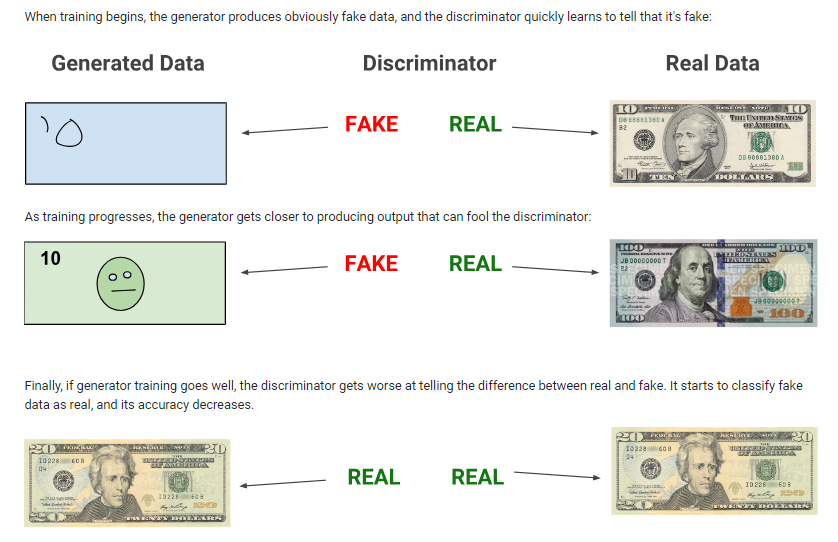07 Oct Generative Adversarial Network (GAN) – Deep Learning Model
A Generative Adversarial Network (GAN) is a type of deep learning model with two neural networks, a generator, and a discriminator. These two are trained simultaneously. Let us see the components of GANs.
Components of Generative Adversarial Network
The objective of GANs is to reach a point where the generator produces data so realistic that the discriminator can no longer reliably distinguish between real and fake data:
- Generator:
- Takes random noise as input and generates synthetic data that mimics real data.
- Its goal is to produce fake data that is indistinguishable from real data.
- To summarize, the generator creates fake data from random noise.
- Discriminator:
- Takes both real and fake data as input. It tries to distinguish between real and fake data and attempts to classify them as real or fake.
- Its goal is to correctly identify the real data and reject the fake data.
- This leads to the generator producing increasingly realistic data.
The generator output is connected directly to the discriminator input.
Process of Generative Adversarial Network
The process of GANs can be easily understood using the real and fake currencies example provided by Google Developers:

Image credit: https://developers.google.com/machine-learning/gan/gan_structure
Applications of Generative Adversarial Network
The following are the applications of GANs:
- Image Generation: Creating realistic images from random noise. This means the GAN takes a random input (often just a vector of random numbers) and transforms it into a realistic-looking face image. Example: DeepFake technology.
- Image-to-Image Translation: Converting images from one domain to another, such as turning sketches into photorealistic images or day-time photos into night-time ones. Example: Pix2Pix, CycleGAN.
- Improving the Resolution: Enhancing the resolution of images, making them clearer and more detailed. Example: SRGAN (Super-Resolution GAN).
- Text-to-Image: Generating images based on textual descriptions. Example: DALL-E.
- Video Generation: Creating new video content. Example: Generating realistic human motion sequences.
Example of Generative Adversarial Network
Let us see an example of creating realistic faces with GANs:
- Generator: Generates fake images of faces from random noise.
- Discriminator: Evaluates these images along with real face images, attempting to classify them as real or fake.
- Training: The generator improves its images based on the discriminator’s feedback, and the discriminator becomes better at spotting fakes.
This process continues until the generated faces are indistinguishable from real ones.
Advantages of Generative Adversarial Network
The following are the advantages of GANs:
- GANs are effective at generating highly realistic images, videos, and other types of data.
- GANs can be applied to a wide range of tasks, including image-to-image translation, super-resolution, text-to-image, etc.
- GANs do not require labeled data (supervised) for training
- GANs open up new avenues in art, design, and content creation by generating unique outputs.
Disadvantages of Generative Adversarial Network
The following are the advantages of GANs:
- Training GANs can be challenging because it requires achieving a good balance between the generator and the discriminator.
- Training GANs are computationally expensive and require significant resources, including powerful GPUs.
If you liked the tutorial, spread the word and share the link and our website Studyopedia with others.
For Videos, Join Our YouTube Channel: Join Now
Read More:
- Feedforward Neural Networks (FNN)
- Convolutional Neural Network (CNN)
- Recurrent Neural Networks (RNN)
- What is Deep Learning
- Deep Learning – Features
- AI vs ML vs DL
- Deep Learning – Advantages and Disadvantages
- Deep Learning- Applications
- Deep Learning – Types
- Neural Network


No Comments